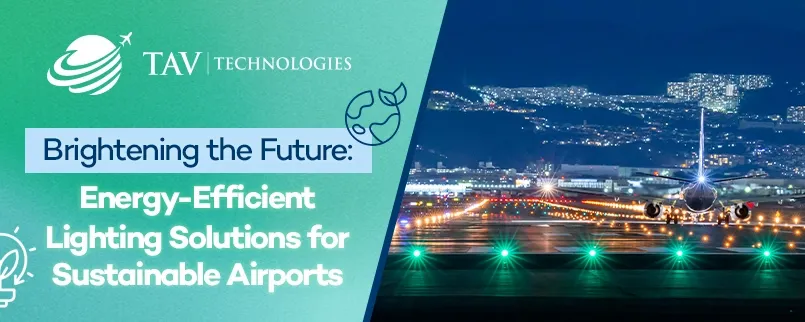
Jul 2024
As critical global transportation hubs, airports operate continuously, demanding extensive and reliable lighting solutions. The vast energy consumption associated with traditional lighting systems not only results in high operational costs but also contributes to significant environmental impacts. Adopting energy-efficient lighting solutions has become a pivotal strategy as the aviation industry moves towards greater sustainability. This blog explores the importance of energy-efficient lighting for airports, the benefits of modern lighting technologies, and successful implementations and future trends.
The Case for Energy-Efficient Lighting in Airports
As global attention increasingly shifts towards sustainability, airports face mounting pressure to reduce their environmental impact. A significant step towards achieving this goal involves adopting energy-efficient lighting solutions.
Airports are among the most energy-intensive facilities, operating around the clock and requiring extensive lighting for runways, terminals, parking areas, and other facilities. Traditional lighting systems, such as incandescent and fluorescent lights, consume large amounts of electricity and have shorter lifespans, resulting in higher energy bills and frequent maintenance requirements.
Benefits of Modern Lighting Technologies
Energy-efficient lighting solutions, particularly LED (Light Emitting Diode) lights, represent a significant advancement in sustainable airport management. LEDs consume up to 75% less energy than traditional lighting, leading to immediate electricity costs and reductions in carbon emissions. Moreover, LEDs boast significantly longer operational lives, often up to 25 times longer than conventional bulbs. This longevity reduces the frequency of replacements, lowering maintenance costs and minimizing disruptions to airport operations.
In addition to economic benefits, modern lighting solutions offer improved light quality, enhancing visibility and safety in critical areas such as runways and taxiways. The superior illumination LEDs support safer flight operations and create a more comfortable and pleasant environment for passengers in terminals and other public spaces.

Successful Implementations and Future Trends
Several airports worldwide have successfully implemented energy-efficient lighting solutions, demonstrating tangible benefits across various operational areas. For instance, Los Angeles International Airport (LAX) achieved a remarkable 75% reduction in energy consumption following a comprehensive transition to LED lighting across terminals, parking structures, and airfields. Similarly, Manchester Airport's adoption of energy-efficient lighting led to a 60% decrease in energy usage while enhancing safety and operational efficiency in its facilities, besides a 50% decrease in carbon emissions.
Looking ahead, the future of airport lighting promises even greater efficiency and sustainability through advancements in smart lighting systems and renewable energy integration. Smart lighting technologies, utilizing sensors and IoT (Internet of Things) capabilities, enable airports to dynamically adjust lighting levels based on real-time conditions and occupancy, further optimizing energy use. Additionally, innovations in solar-powered lighting solutions offer promising opportunities for airports located in sunny regions to harness renewable energy sources for their lighting needs.
A Strategic Investment for the Future
Transitioning to energy-efficient lighting solutions represents a strategic investment for airports seeking to enhance sustainability, reduce operational costs, and improve the overall passenger experience. By embracing these modern technologies, airports can advance global efforts toward a greener future while bolstering their economic resilience and operational efficiency.
